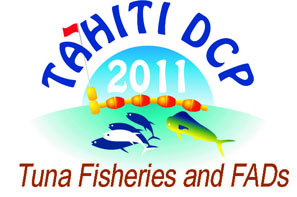Social interactions and aggregation processes at FADs
1 : Institut de Recherche pour le Développement
(IRD)
UMR 212
Av. J. Monnet, 34203, Sete -
France
2 : USE
(Unit of social Ecology)
Université Libre de Bruxelles, Campus de la Plaine, Boulevard du triomphe, Bat NO 5et 1050 Ixelles, Bruxelles, Belgique. -
Belgique
3 : Institut de Recherche pour le Développement
(IRD)
* : Corresponding author
UMR 212
Av. J. Monnet, 34203, Sete -
France
Increases in the density of individuals in a given area occurs at a variety of biological levels ranging from bacteria to humans. This aggregation phenomena involves individual responses to environmental heterogeneities and social interactions. Tunas are social species; however the contribution of schooling and inter-individual attraction in their aggregation process under floating structures is often suggested but rarely studied. Through the combination of modeling and experimental approaches, this work reveals how the consideration of social interactions changes our view of the aggregation processes. This, in turn, provides insight into how the release of large numbers of FADs in the ocean potentially influences tuna behavior, a major management issue. In a system without inter-individual attraction, the greater the number of FADs, the greater the total number of individuals around all FADs. With inter-individual attraction, where the population under a FAD influences the probability of an individual leaving or joining this FAD, results are very different: the model predicts heterogeneous partitioning of individuals among FADs and that an optimal number of FAD exists, that would maximize the total population around FADs. These models' predictions are compared to observed distributions of tuna populations at FADs, derived from observers' data. Furthermore, we report on the first trail of a binary choice experiment applied to tuna-FAD association. A flourishing literature demonstrates how such experiments are helpful in understanding the extent to which social interactions influence aggregation patterns. Despite various technical difficulties, highlighted in the discussion, the results support the need to perform further binary choice experiments and to collect indices of schooling behavior around FADs.

 PDF version
PDF version
